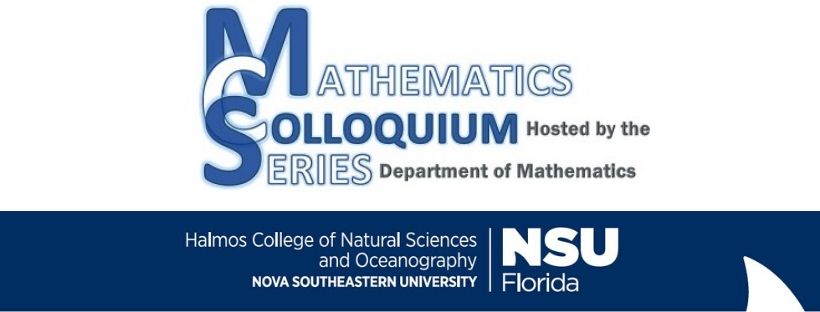Localized Activity States for Neuronal Field Models of Feature Selectivity
Description
The formation of spatially localized activity profiles, or “bumps,” has long been proposed as a mechanism for feature selectivity in models of the visual system, head direction system, saccadic eye movements, and working memory. In sensory systems, such bumps should exist only during the presentation of a stimulus, whereas in memory and certain motor systems they should persist for some period after the initiating stimulus.
In his talk, Haskell will discuss the development of a field model for a neuronal network with recurrent interactions that lead to the formation of spatially localized activity states and the influence of the topology of the stimulus space on the formation of these bumps. All NSU students, faculty and staff members are welcome to attend this presentation.
Date of Event
October 6, 2010 12 - 1:00 PM
Location
Mailman-Hollywood Building, Room 311, 3301 College Ave., Fort Lauderdale (main campus)
NSU News Release Link
http://nsunews.nova.edu/mathematics-colloquium-series-opens-talk-neuronal-field-models-oct-6/
Localized Activity States for Neuronal Field Models of Feature Selectivity
Mailman-Hollywood Building, Room 311, 3301 College Ave., Fort Lauderdale (main campus)
The formation of spatially localized activity profiles, or “bumps,” has long been proposed as a mechanism for feature selectivity in models of the visual system, head direction system, saccadic eye movements, and working memory. In sensory systems, such bumps should exist only during the presentation of a stimulus, whereas in memory and certain motor systems they should persist for some period after the initiating stimulus.
In his talk, Haskell will discuss the development of a field model for a neuronal network with recurrent interactions that lead to the formation of spatially localized activity states and the influence of the topology of the stimulus space on the formation of these bumps. All NSU students, faculty and staff members are welcome to attend this presentation.
https://nsuworks.nova.edu/mathematics_colloquium/ay_2010-2011/events/11



Presenter Bio
Evan Haskell has a Ph.D. and is an Associate Professor at Nova Southeastern University